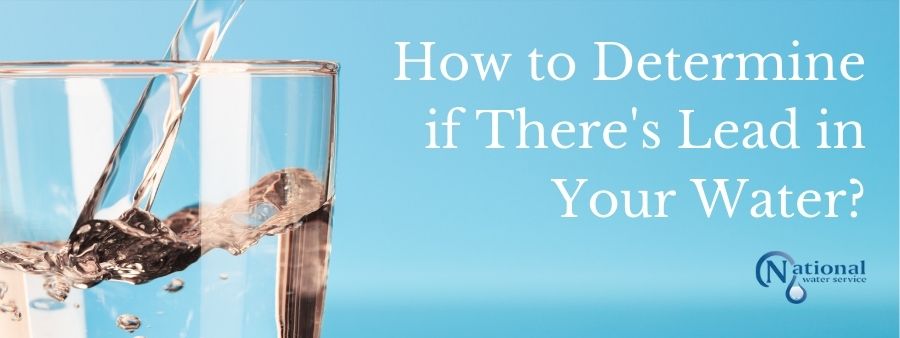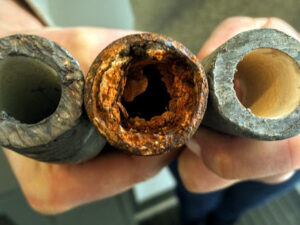
Lead contamination in water happens when the substance gets into the water supply through improper plumbing connections, corrosion in old pipes, or even from old solder used to connect copper pipes. Even seemingly harmless fixtures, such as toilets and faucets, are oftentimes the cause of lead entering into the water supply.
While you might not see it, smell it, taste it, or feel it, there is still a chance that your drinking water has been contaminated with this dangerous metal. If you want to find out whether there is a possibility of lead in your water, then you actually need to do some research and testing at home.
Lead is a dangerous toxin, so you need to address it as quickly as possible. Here are a few ways you can determine if there is lead in your water to keep you, your family, and even your pets safe.

To get an error-free lab report, it is always advised that you ask for instructions from the lab to which you will be sending your water sample. Some labs have specific guidelines for the type of sample container you should use to the type of water you need to send to get accurate results. Make sure to confirm if your lab has any such instructions before you mail them your samples for water testing.
Next, sample your water. You need stagnant water from your pipes to see if there is lead in your pipes. So, the best way to sample the water is from a faucet that hasn’t been used for at least six hours. That said, all your faucets and flushes need to remain unused before the sampling. Therefore, make sure that you don’t use your system overnight and collect your water sample first thing in the morning.
Mail the samples in and wait for the test results. If the reports find lead in your water, consider water treatment options immediately.

If you have a private well or another private water supply, you can get in touch with your local health department or check with your neighborhood water utilities that use groundwater to get information on whether testing for the presence of lead is required.

The U.S. government only issued lead regulations in 1925. Before that, it was business as usual. So, if the service line to your home was installed prior to 1925 when lead-based materials were commonly used, you might have lead contamination in your water. Alternatively, if the material used to make your service line cannot be identified or you get your water from a private well, assume that the pipes leading to your home are made from lead.
You can then work with a licensed plumber to determine if there is lead in your water by testing household fixtures for lead, such as faucets, water filters, showerheads, and sinks inside your home.

Your municipality may be able to provide you with a free kit, usually sent by mail with instructions on how to collect water samples and submit them for testing. Since they are provided by the government, these kits are quite reliable for home water testing. So, you can count on their results.
Alternatively, it may be worth investing in a paid DIY testing kit to have peace of mind. These can cost approximately $30 but vary depending on the manufacture. The procedure to conduct a home test is the same as that of a lab test. So, keep your faucets and flushes unused for several hours before conducting your test.
But remember that although you might get your test results quickly, they won’t be as conclusive as one from a certified lab.
If you think there is lead in your water you might want to consider some government-recommended water treatment methods. These include “reverse osmosis, distillation, and carbon filters specially designed to remove lead.” These methods can fit any budget but they may not always work for everyone as they can only treat one faucet at a time.
Smelly and colored water can be alarming signs of lead poisoning, which can result in serious health issues for everyone, not just young children and pregnant women. So, while it may seem simple enough to conduct a well water treatment to have a clean and safe water supply to your home, it isn’t always enough.
Because sometimes, it isn’t as much about water treatment as it is about installing a new system altogether. Our well pump services will not only ensure that you have access to clean, lead-free water but also that set you up with a suitable water system in your home.
National Water Service has been providing residential & small commercial water treatment, plumbing & well pump services for over 45 years. We specialize in water treatment, filtration & purification solutions as well as general plumbing to ensure clean, safe water for our customers in Maryland, DC & Northern Virginia.
Mon - Thurs
7:00am - 5:00pm
Friday
7:00am - 4:00pm
Sat - Sun
Emergency Service Available
National Water Servicing Corporation — 2025 All Right Reserved ™